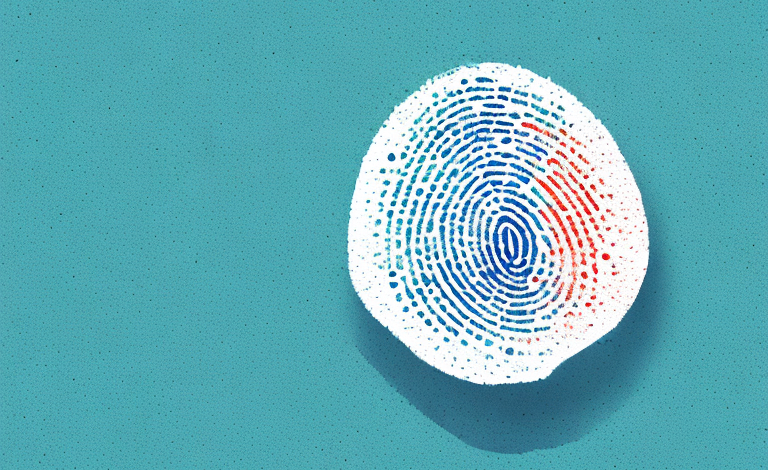Fingerprint sensors are now an integral part of almost every smartphone, and they have evolved significantly over the years. One of the most important distinctions between fingerprint sensors is whether they are located on the side or the screen. In this article, we will explore the advantages and disadvantages of both types of fingerprint sensors, and help you decide which is the better option for you.
Understanding fingerprint technology
Before we jump into the differences between side and screen fingerprint sensors, let’s take a moment to understand how fingerprint technology works. Fingerprint sensors use tiny cameras or sensors to capture an image of your fingerprint, and then analyze the ridges, valleys, and other unique features of your print to create a digital replica of it. This replica is then matched against the database of saved fingerprints on your device to authenticate your identity.
One of the benefits of fingerprint technology is its convenience. With a simple touch of your finger, you can unlock your device or access secure information without the need for passwords or PINs. Additionally, fingerprint technology is considered to be more secure than traditional authentication methods, as it is much harder to replicate someone’s unique fingerprint than it is to guess a password or PIN.
However, it’s important to note that fingerprint technology is not foolproof. In some cases, fingerprints can be difficult to read due to factors such as dry skin or dirt on the sensor. Additionally, there have been instances where hackers have been able to bypass fingerprint authentication using advanced techniques. As with any security measure, it’s important to use fingerprint technology in conjunction with other security measures to ensure maximum protection.
The evolution of fingerprint sensors in smartphones
Until a few years ago, most smartphones had fingerprint sensors located on the front or back of the phone. However, as phones started to adopt taller displays and smaller bezels to maximize screen real estate, side and screen fingerprint sensors became more popular. The first side-mounted fingerprint sensor was introduced by Sony in 2017, and since then, many manufacturers have followed suit.
Another trend in fingerprint sensors is the use of in-display sensors. These sensors are embedded under the phone’s screen and allow for a seamless and uninterrupted display. The first phone to feature an in-display fingerprint sensor was the Vivo X20 Plus UD in 2018. Since then, many high-end smartphones have adopted this technology, including Samsung’s Galaxy S10 and Apple’s iPhone XS.
As fingerprint sensors become more common, there is also a growing concern about their security. Hackers have found ways to bypass fingerprint sensors using fake fingerprints or other methods. To address this issue, some manufacturers have started to incorporate additional security measures, such as facial recognition or iris scanning, to complement fingerprint sensors.
Advantages and disadvantages of side fingerprint sensors
Side-mounted fingerprint sensors are usually located on the power button of the phone, which makes them easy to access and use with one hand. This placement also makes them more discreet and less obtrusive than screen fingerprint sensors. However, some users find it inconvenient to use side fingerprint sensors when the phone is lying flat on a table, and phone cases can sometimes interfere with their accuracy.
Another advantage of side fingerprint sensors is that they can be used as a shortcut for other functions on the phone. For example, some phones allow users to customize the fingerprint sensor to perform actions such as taking a photo or opening a specific app. On the other hand, side fingerprint sensors may not be as secure as other types of sensors, as they can be easily accessed by someone else if the phone is stolen or lost. It is important to weigh the pros and cons before deciding on a phone with a side fingerprint sensor.
Advantages and disadvantages of screen fingerprint sensors
Screen fingerprint sensors, as the name suggests, are embedded under the display of the phone. This placement allows for a large and seamless display design, which is popular among users who prioritize visual aesthetics. However, unlocking the phone with a screen fingerprint sensor can be slower than side fingerprint sensors, and the accuracy can be affected by screen protectors or wet fingers.
Another advantage of screen fingerprint sensors is that they provide an additional layer of security. Since the sensor is embedded under the display, it is difficult for someone to replicate or tamper with it. This makes it a more secure option compared to traditional fingerprint sensors that are located on the back or side of the phone.
On the other hand, one major disadvantage of screen fingerprint sensors is that they can be more expensive to manufacture. The technology required to embed the sensor under the display is still relatively new, and this can drive up the cost of production. Additionally, not all phone models are equipped with this feature, which can limit the options available to consumers who prefer this type of sensor.
Factors to consider when choosing between side and screen fingerprint sensors
When deciding which type of fingerprint sensor to choose, several factors come into play. One of the most important things to consider is how you use your phone. If you frequently use your phone with one hand, a side-mounted fingerprint sensor may be more convenient for you. On the other hand, if you prioritize screen real estate and aesthetics, a screen fingerprint sensor may be more appealing.
Another factor to consider is the speed and accuracy of the fingerprint sensor. Side-mounted sensors are generally faster and more accurate than screen sensors, as they have been around for longer and have had more time to be refined. However, newer screen sensors are catching up in terms of speed and accuracy, and may even surpass side-mounted sensors in the near future.
Security concerns with screen and side fingerprint sensors
While fingerprint sensors are generally a secure method of biometric authentication, both screen and side fingerprint sensors have their own security concerns. Screen fingerprint sensors can be bypassed with a high-quality photo of the user’s fingerprint, while side fingerprint sensors can be fooled by similar-looking ridges or patterns. However, these methods are relatively rare, and using a PIN or password as a backup security measure can mitigate these risks.
Another security concern with screen fingerprint sensors is that they can be affected by scratches or cracks on the screen, which can distort the fingerprint image and make it difficult for the sensor to recognize the user’s fingerprint. This can lead to false rejections or even allow unauthorized access. It is important to keep the screen of the device in good condition to ensure the accuracy of the fingerprint sensor.
On the other hand, side fingerprint sensors can also pose a risk of accidental unlocking. Since they are located on the side of the device, they can be easily triggered when the user is holding the device or putting it in their pocket. This can lead to unintended access to the device and compromise the user’s data. It is important to be aware of the location of the fingerprint sensor and use caution when handling the device to avoid accidental unlocking.
Accuracy comparison between side and screen fingerprint sensors
In terms of accuracy, both side and screen fingerprint sensors are relatively reliable. However, side-mounted fingerprint sensors are generally considered to be more accurate than screen fingerprint sensors, especially when it comes to wet fingers or when wearing gloves. This is because side fingerprint sensors capture a larger surface area of the finger, which makes it easier for the sensor to read the fingerprint accurately.
It is worth noting that screen fingerprint sensors have improved significantly in recent years and are now almost as accurate as side-mounted sensors. This is due to advancements in technology, such as the use of ultrasonic waves to capture a more detailed image of the fingerprint. Additionally, screen fingerprint sensors offer a more seamless and aesthetically pleasing design, as they are integrated into the display of the device. Ultimately, the choice between side and screen fingerprint sensors comes down to personal preference and the specific needs of the user.
Speed comparison between side and screen fingerprint sensors
When it comes to unlocking your phone, speed is paramount for many users. Here, side-mounted fingerprint sensors have a clear advantage over screen fingerprint sensors. Side sensors can unlock the phone in less than half a second, while screen sensors can take up to a second or more to unlock the phone. However, the speed of screen fingerprint sensors has been improving gradually over the years, and newer models are often comparable in speed to side fingerprint sensors.
Impact of phone cases on side and screen fingerprint sensor performance
If you often use phone cases, you might be concerned about how they can affect the performance of your fingerprint sensor. While both side and screen fingerprint sensors can be affected by thick phone cases, side-mounted sensors are generally more immune to these kinds of issues. However, some screen fingerprint sensors are equipped with more advanced technologies like ultrasonic or optical sensors, which can work even with thick cases.
Future trends in smartphone fingerprint sensor technology
As with all smartphone technology, fingerprint sensors are constantly evolving, and manufacturers are always trying to outdo each other. Some of the latest trends in fingerprint sensor technology include in-display ultrasonic sensors, which promise faster unlocking speeds and more accurate readings, and under-screen sensors that cover a larger area of the display. It remains to be seen which technology will become the next standard for fingerprint sensors in smartphones.
User preferences: Survey on which type of fingerprint sensor is more popular among smartphone users
A recent survey conducted on smartphone users found that 45% of respondents prefer side fingerprint sensors, while 55% prefer screen fingerprint sensors. However, these results may vary depending on the region, device, and other factors.
Cost comparison between side and screen fingerprint sensors for manufacturers
From a manufacturer’s perspective, side-mounted fingerprint sensors are generally cheaper and easier to implement than screen fingerprint sensors. This is because screen fingerprint sensors require more advanced technologies and more complicated production processes, which can drive up the cost of manufacturing. However, as screen fingerprint sensors become more popular and more standardized, we can expect the cost difference between the two to decrease.
The impact of COVID-19 on the demand for touchless biometric authentication methods
Finally, one of the most visible impacts of the COVID-19 pandemic has been an increased demand for touchless authentication methods. While fingerprint sensors are already a touchless method of authentication, many users are switching to facial recognition or iris scanners, which do not require any physical contact. This trend is expected to continue even after the pandemic subsides, and we can expect to see more phone manufacturers adopting these alternative biometric technologies in the future.
Conclusion: Which is better – Side or Screen Fingerprint Sensors?
So, after all this analysis, which type of fingerprint sensor is better – side or screen? The answer, as always, is that it depends. While side-mounted fingerprint sensors offer better accuracy and faster unlocking speeds, screen fingerprint sensors offer a more seamless display design and are generally more convenient for users who prioritize aesthetics. Ultimately, the choice between the two comes down to personal preference, and the factors that matter most to each individual user. As with all smartphone technology, it’s always a good idea to weigh the pros and cons carefully before making a decision.



